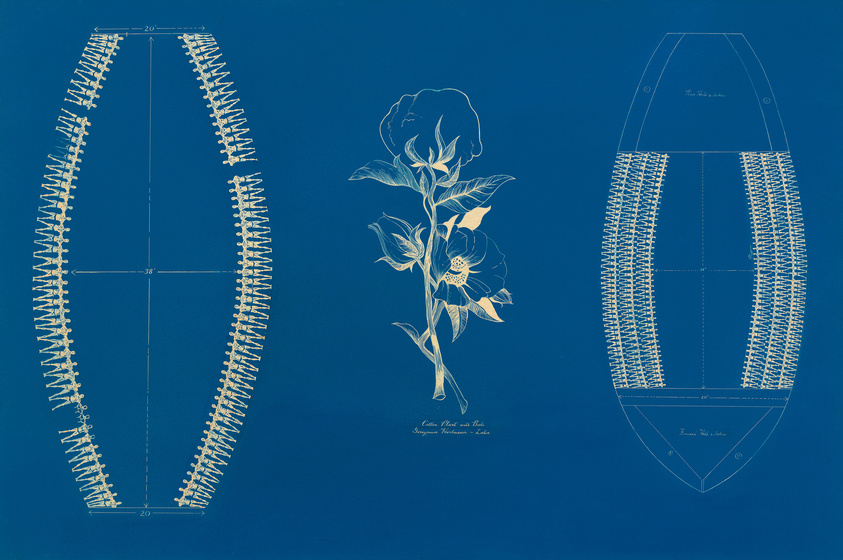The painting, Untitled, 1969, is on a large, rectangular composition board about 6 feet wide by 4 feet tall. The surface is a rich blue that evokes the deep sea.
There are three images painted onto the canvas, visually dividing the painting into approximately three vertical sections. The painting is in the style of a scientific diagram, meant to measure accuracy and relay subject matter in great detail. Though these images are large and take up the majority of the blue backdrop, they are detailed enough to be inscrutable from more than a few feet away.The images--made up of fine white lines--are directly inspired by diagrams created by abolitionist activists in the late eighteenth century to relay the atrocities of the transatlantic slave trade and the inhuman conditions under which human cargo was transported from Africa to the West Indies and America. The straightforward, diorama-likestyle of this work contrasts starkly with the horror of the subject matter.
The middle image is of a plant with several leaves and three flowers; two in bloom and one bud. There is an inscription in small lettering beneath the plant that reads “Cotton Plants with Buds Gossypium Herbaceum ~ Latin”. The two images on either side are oval-like and span from nearly the top of the canvas to the bottom. There are measurements and dimensions noted within and along the shapes, making it clear they are the blueprint for something much larger. Along these lines are small, repeating, identical human figures, which leads us to understand the outlines as the cross-section of large ships. The delicately painted human bodies are lined up, efficiently shoulder to shoulder. On the left ship blueprint, the bodies span the vertical length of the ship in a single line. At times, there are gaps between the bodies and at other times they are unfinished, beginning with the head and shoulders before fading into the blue of the background. In the blueprint to the right, the bodies are confined to the middle portion of the ship and are neatly stacked three rows wide



